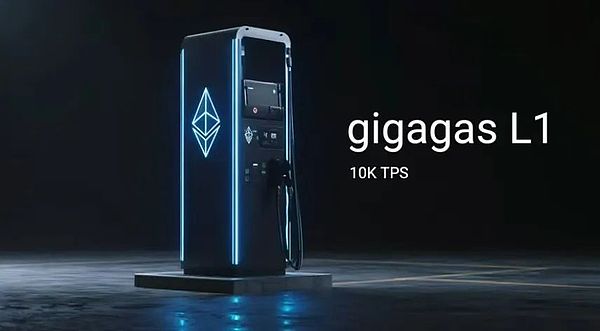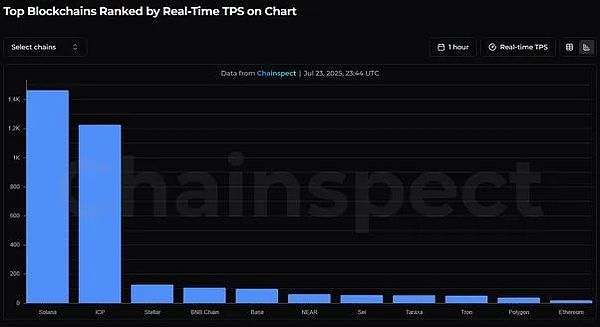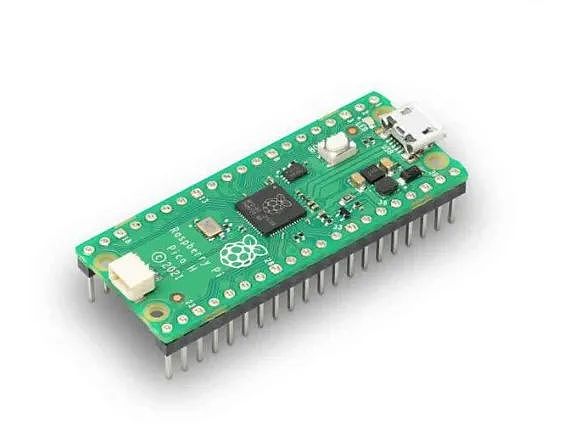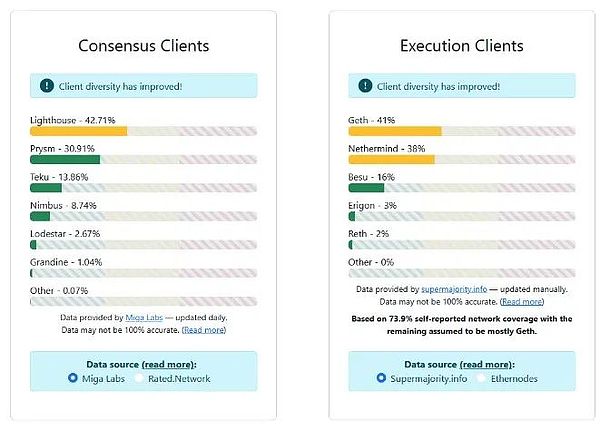
Editor’s note:Ethereum is moving towards a new era of expansion of 10,000 TPS, and zero-knowledge proof (ZK) technology is becoming a key driver. This article is the first article of “Ethereum 10,000 TPS Roadmap” compiled by us. It disassembles ZK technology, zkEVM roadmap and Ethereum L1 expansion plan in a common way. The next article will in-depth discussion of the challenges of ZK implementation, L2 ecological evolution and the future impact on the Ethereum economic structure.
On July 30, 2025, Ethereum celebrated its 10th anniversary of the Creation Block. After ten years of exploration, Ethereum’s expansion roadmap is also exploring new directions and visions.
Of course, the recent price increase in ETH has also brought confidence to the community again, but what is really exciting is that after years of exploration around L2 expansion, Ethereum L1 finally has a trusted path to achieve ultimate expansion while maintaining the maximum decentralization.
In short, from now on,Ethereum’s Gas cap and TPS plan increase several times each year, and Validators will no longer execute each transaction repeatedly (Editor’s note: that is, there is no need to calculate the state changes of the transaction from a beginning), but will only verify a zero-knowledge proof (ZK-proof).To prove that this batch of transactions is executed correctly, it can increase the TPS of the underlying network to tens of thousands of transactions per second.
At the same time, L2 will also expand capacity simultaneously, achieving hundreds of thousands or even millions of TPS, and a new L2 called Native Rollup will run like programmable shards, providing the same security as L1.
While these proposals have not been formally approved by the Ethereum governance process, they are built on the idea that Vitalik Buterin began exploring in 2017 and supported by Justin Drake, a core researcher at the Ethereum Foundation.
At the EthCC conference in July, Drake said: “We are at a critical turning point in the expansion of Ethereum. I firmly believe that we are about to enter the GigaGas era of L1 – about 10,000 TPS, and the key to starting this era is zkEVM and real-time proofing.
Drake’s ultimate goal is to enable the Ethereum ecosystem to achieve 10 million TPS within 10 years, but this means that no single blockchain can meet this throughput requirement. In the future, it will inevitably be a “network in the network” architecture: different L2s each undertake different scenarios, trade-offs and advantages, and jointly expand the entire ecosystem to meet global needs.

Why has Ethereum L1 been unable to expand on a large scale?
Although other blockchains have long begun to try to use more powerful hardware and computing power to expand throughput, Ethereum has always had a near-ideology of decentralization, and some people may even feel “utopian” persistence.
From the perspective of ETH maxis,“Data center chains” like Solana have millions of dollars of centralized risk points that governments can conduct transaction reviews directly on these nodes. Even chains like Sui with lower hardware specifications have a prohibitive cost and bandwidth requirements.This affects the degree of decentralization.
In contrast, Ethereum can even run on the Raspberry Pi. This low-threshold design allows more than 15,000 to 16,000 public nodes and millions of validators to participate in the network, making it nearly impossible to censor transactions on Ethereum and make the entire network extremely resilient to attacks.
Of course, the price is extremely slow – the current TPS is about 18 to 20 transactions per second, while Solana’s TPS is about 1500 transactions per second.

To some extent, blockchain architecture is inherently inefficient, a bit like a Google Sheets.Whenever you modify a cell, all computers in the world that have copies must first recalculate the entire table and can only be updated after confirming that it is correct.
Uma Roy, co-founder of ZK technology company Succinct Labs, explained: “Ethereum is designed to want anyone to keep up with the network and re-execute all transactions,” which also means that transaction volume cannot be infinitely amplified because every transaction requires someone to recalculate.
Precisely because of the limited space for main network expansion while maintaining decentralization, Ethereum had to embark on the controversial route of L2 layered expansion in 2020.
How to crack the impossible triangle of blockchain?
Ethereum founder Vitalik Buterin once proposed the concept of “the impossible triangle of blockchain” to describe the dilemma of public chains that are difficult to get both security, scalability and decentralization.
Almost all expansion plans can only meet two of them at the same time, and the third one will inevitably be sacrificed.
Until now.
ZK-Proof, a technology described by Drake as “moon math” – can mathematically prove that a large number of complex transactions have been executed correctly without revealing transaction details.
The process of generating a ZK proof is very complicated, but verifying that a proof is correct is fast and lightweight.
Therefore, Ethereum’s future concept is: instead of letting a bunch of Raspberry Pi nodes recalculate all transactions one by one, it is better to let the verifier check the mathematical results of a very small ZK proof.
Uma Roy, co-founder of Succinct Labs, continued to explain,“Instead of asking everyone to re-execute all transactions, it is better to give them a proof directly and tell them that these operations have happened so that anyone can verify the proof without having to re-calculate the calculation.”
Drake even quips that future verified ZK proofs to be as small as possible for even the $7 Raspberry Pi Pico (less than one-tenth of a regular Raspberry Pi) and does not require a large data center at all.

zkEVM: Roadmap to 10,000 TPS
A recent blog post by Sophia Gold of the Ethereum Foundation has sparked heated discussions in the community: In the next year, the L1 mainnet may integrate zero-knowledge proof-driven Ethereum virtual machine (zkEVM).
It is worth noting that many practical explorations of ZK technology actually start from the L2 network. For example, Linea, which was incubated by Consensys, a subsidiary of Ethereum co-founder Joe Lubin, is a 100% EVM-compatible ZK Rollup public chain – any application that can run on Ethereum can run seamlessly on Linea.
Linea even sees itself as an extension of Ethereum and recently announced that it will destroy 20% of ETH transaction fees to support the return of L1 value.
Linea head Declan Fox explained that ZK technology provides the answer to the impossible triangle of blockchain: “The magic of ZK is that we can significantly increase the Gas cap of L1, and the expansion of computational volume does not make verification more complicated.”
He added that as the latency and cost of ZK proof generation continue to decline, we are able to handle higher throughput while keeping the hardware requirements for verification extremely low – even a smartwatch is competent for verification.
However, the community doesn’t have to be overly optimistic.Even if zkEVM is successfully integrated into L1 within the next year, it will not directly achieve 10,000 TPS on the first day.
A daytime archery, then complete it in an instant
Ethereum currently has five major software clients that can be used to run the network, which means that even if a client has problems, the network will not be shut down like Solana.
In the future upgrade route, Ethereum plans to release two to three modified clients that support ZK verification, allowing validators to choose to complete verification by checking ZK-proofs without re-executing each transaction.

Initially, only a few validators will be the first to switch to the new verification mode to troubleshoot and fix potential issues early.
Ladislaus of the Ethereum Foundation Agreement Coordination Team said, “Switching to a snark-based EVM will be a step-by-step process” – the “snark” here refers to zero-knowledge proof using the SNARK type.)
Users will mainly gradually feel that the Gas cap of L1 is increased, that is, the network’s economic activity capacity is enhanced. Although the transition from L1 to ZK verification takes time, the expansion of the Gas cap is almost on the verge of being on the string.
Last week, the L1 Gas cap just increased by 22% to 45 million, and researcher Dankrad Feist proposed an EIP that suggests that the client automatically raises the Gas cap three times a year.According to this plan, the Ethereum mainnet will achieve approximately 2,000 TPS in four years.
Justin Drake even further proposed to extend this rhythm for two years, and by 2031, it can reach a throughput of 1 gigagas, achieving about 10,000 TPS.







